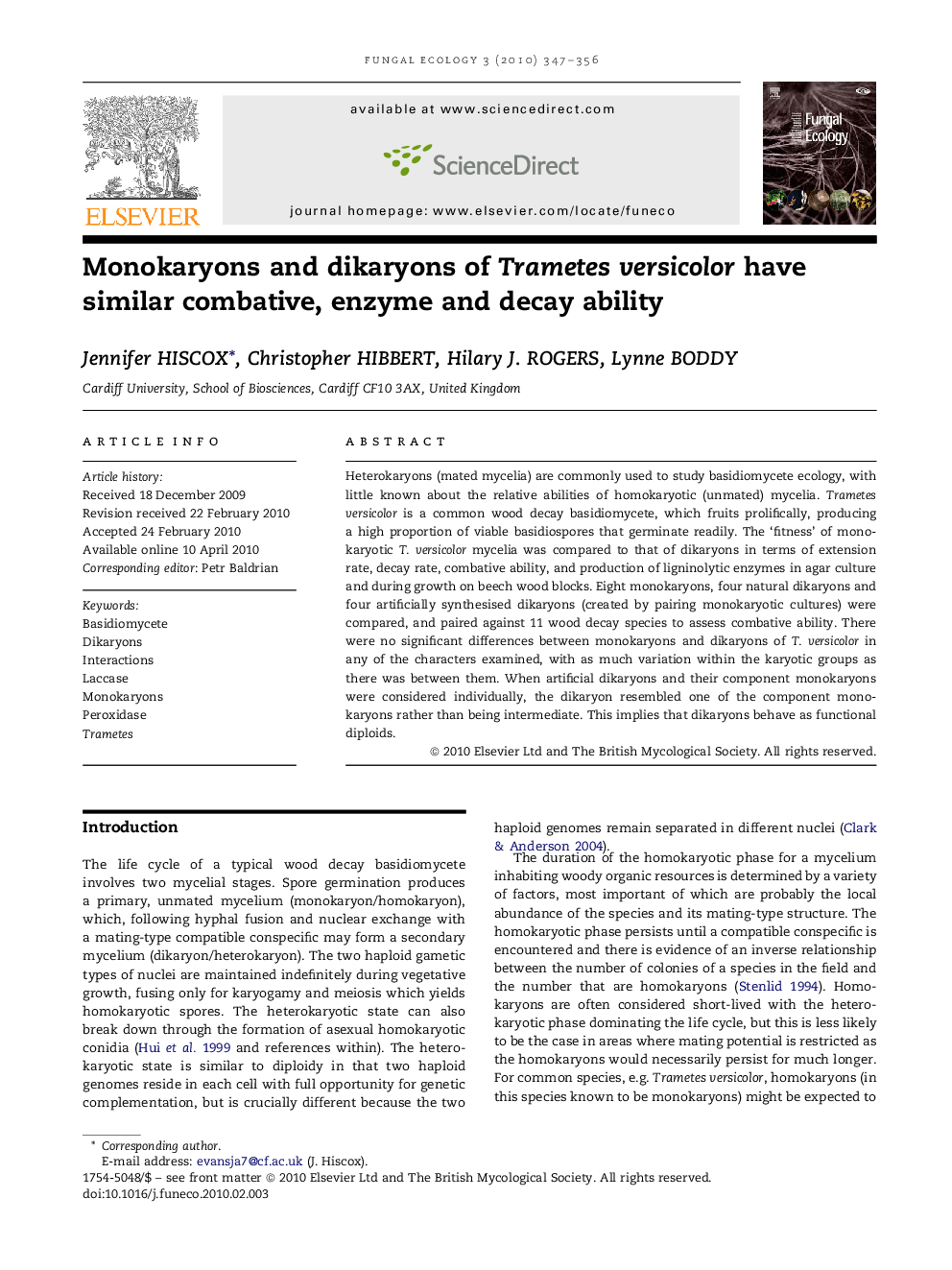| Article ID | Journal | Published Year | Pages | File Type |
|---|---|---|---|---|
| 2054148 | Fungal Ecology | 2010 | 10 Pages |
Heterokaryons (mated mycelia) are commonly used to study basidiomycete ecology, with little known about the relative abilities of homokaryotic (unmated) mycelia. Trametes versicolor is a common wood decay basidiomycete, which fruits prolifically, producing a high proportion of viable basidiospores that germinate readily. The ‘fitness’ of monokaryotic T. versicolor mycelia was compared to that of dikaryons in terms of extension rate, decay rate, combative ability, and production of ligninolytic enzymes in agar culture and during growth on beech wood blocks. Eight monokaryons, four natural dikaryons and four artificially synthesised dikaryons (created by pairing monokaryotic cultures) were compared, and paired against 11 wood decay species to assess combative ability. There were no significant differences between monokaryons and dikaryons of T. versicolor in any of the characters examined, with as much variation within the karyotic groups as there was between them. When artificial dikaryons and their component monokaryons were considered individually, the dikaryon resembled one of the component monokaryons rather than being intermediate. This implies that dikaryons behave as functional diploids.
